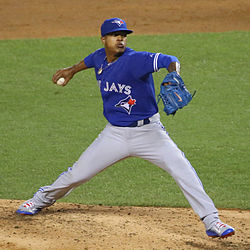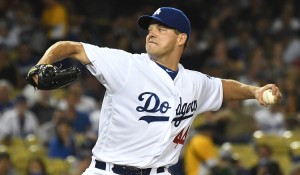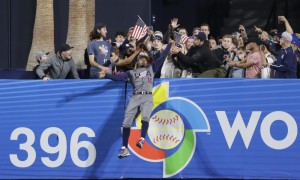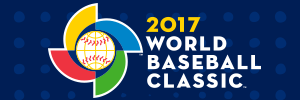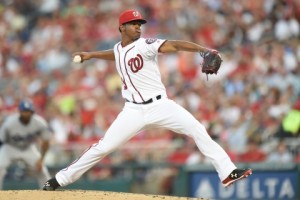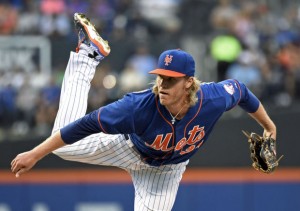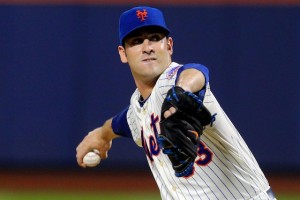I saw an article this morning on Prospect Insider titled “Every MLB’s best Unsigned Draft pick.”
Being that i’m a big draft guy and hyper-follow our draft picks, I was excited to see who they picked. And, to my chagrin, they chose to combine the Expos history with the Nationals and ended up picking Mark McGwire, who the Expos drafted in 1981 but didn’t sign out of high school. In fact, most of their honorable mentions were also Expos picks.
Well, with all due respect to the franchises time in Montreal, I wanted to do this analysis and bound it by the time of the franchise here.
So, here’s some analysis of the National’s best unsigned draft picks since 2005. For the below, up until the 2012 draft year only players who appeared in the majors are listed; from 2013 onwards we’ll also mention prospects who are highly regarded and/or who seem close to the majors. And, frankly, there’s nobody worth identifying past the 2016 draft since they’re all still in college and we won’t know if they get drafted until we figure out the 2020 draft.
Using the Draft Tracker as a guide, here’s the candidates (from earliest to latest):
- Scott Barnes; 2005 43rd round pick out of Cathedral HS in Mass, went to St. Johns instead and was an 8th rounder in 2008 by San Francisco. He was flipped to Cleveland, appeared in parts of two seasons 2012-2013 then played out the string in the minors.
- Khris Davis, a 2006 29th round pick out of Deer Valley HS in AZ, went to Cal State Fullerton and was a 7th rounder in 2009 by Milwaukee. He was traded to Oakland in 2016 and has blossomed into one of the premier power hitters in the league (leading the AL in homers in 2008 despite playing in Oakland’s hitter’s park).
- Aaron Crow, our 2008 1st round pick (9th overall) who failed to sign out of Missouri, went back to school then became the 1st round (12th overall pick) by Kansas City the next year. Crow put in four solid years as an 8th inning reliever, blew out his elbow and had TJ surgery in 2015. He barely pitched in 2016, then missed all of 2017 before getting cut loose and moving to the Mexican league. Not signing Crow was a pretty embarrassing situation for Jim Bowden and the franchise at the time, one more additional data point proving the incompetence of the organization. The Nats recouped the pick in 2009 of course, picking Drew Storen in his place. Even given Storen’s challenges, most would not argue that the Nats (on the field anyway) got the best out of this pick in the end.
- Louis Coleman, a 2008 14th rounder from LSU who went back for his senior year and became the 5th round pick of Kansas City in 2009 (I guess KC just picked up all our rejects in the 2009 draft). Coleman became a middle RH relief pitcher in the KC bullpen for several years.
- Cory Mazzoni was a 2008 26th rounder out of a PA HS, went to NC State and became a 2nd round pick in 2011 by the Mets. He eventually got moved to the bullpen, traded and had a grand total of 22 appearances over 3 seasons.
- Chris Heston was a 2008 29th round pick out of Seminole Juco in FL, then was drafted and signed as a 12th rounder the next year in 2009 by San Francisco. He matriculated to the majors with San Francisco, had one solid season in the Giants rotation in 2015, then struggled to stay on the field ever since.
- Robert Brantly, a 2008 46th round pick out of an AZ HS, went to UC Riverside and became a 3rd round pick by Detroit in 2010. He’s bounced around as an “org-guy” catcher since, and is currently with San Francisco.
- Alex Dickerson, a 2008 48th round pick out of Poway HS in California. Went to Indiana and became a 3rd rounder by Pittsburgh in 2011. He’s bounced around a bit as a lefty corner outfielder type and is currently with San Francisco.
- Marcus Stroman, a 2009 18th rounder from a NY HS, went to Duke and became a 1st round pick (22nd overall) by Toronto. Interestingly, he was listed as a SS out of high school but became (and was drafted as) a starter in college. He’s most people’s immediate answer for this question, but there are more than a few possible alternatives.
- Kyle Martin, a 2009 39th round pick out of a TX HS, went to Texas A&M, was drafted again after his Junior season and again after his senior season, when he signed with Boston. His entire MLB career was two games in 2017.
- Hoby Milner, a 2009 44th rounder out of a TX HS, he went to Texas, became a 7th rounder by Philadelphia in 2012, has bounced around a bit and signed as a FA with the Angels for 2020. He’s a lefty starter converted to reliever and was a closer for Durham in Tampa’s system last season.
- Ryan Sherrif was a 2010 33rd rounder out of a Los Angeles Juco, then signed as a 28th rounder in 2011 with St. Louis. He appeared in their bullpen for parts of two seasons.
- Skye Bolt, a 2012 26th rounder from a GA HS, went to UNC and starred there, became a 4th rounder by Oakland in 2015. He debuted in 2019 and is profiling as a switch-hitting center fielder with some decent power, but looks like perhaps a 5th OF for the Oakland team in 2020.
- Garrett Hampson, a 2013 26th rounder out of Reno, went to Long Beach State, became a 3rd rounder in 2016 by Colorado and debuted in 2018 for the Rockies. He currently projects as a utility guy for the Rockies, with the ability to play inf and of.
- Shaun Anderson was our 2013 40th round pick out of American Heritage HS in FL, he went to the U of Florida and was Boston’s 3rd rounder in 2016, he got flipped to San Francisco in 2017 and had matriculated to the majors by 2019, appearing as a swingman/spot starter last season. He isn’t projecting to the Giants rotation in 2020 with their off-season veteran acquisitions.
- Austin Byler was our 2014 9th rounder out of Nevada; he declined to sign and was drafted in the 11th round the next year by Arizona. Byler struggled to produce as a 1b-only player, never got out of A-ball and was released out of affiliated ball after 2017. I mention him less as a candidate here, but more as a post-mortem on one of the few top-10 round signing failures we’ve had.
- Stuart Fairchild was our 38th round pick in 2014 out of a Washington HS, went to Wake Forest, then was the 2nd round pick of Cincinnati in 2017. He is listed as as the 13th best prospect by one pundit in the Cincinnati organization and is projected for AA.
- Andrew Suarez was our 2nd round pick in 2014 out of U of Miami, declined to sign, then became San Francisco’s 2nd rounder the next year. He debuted in the SF rotation in 2018 making 29 starts, then got dropped to the rotation for 2019 and struggled. He is projecting as the 5th starter in 2020.
So, who is the “best” player we drafted but didn’t sign? probably Stroman, then Davis, then Suarez.
Who of these was our “worst” non-sign? for me its the only three top-10 picks on this list: Crowe, Suarez and Byler. I think Crowe was the worst just for the reputational damage it did to the front office here (even if, in hindsight, we got the better player). Suarez #2; I think he could still feature in this league.
